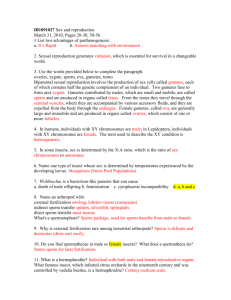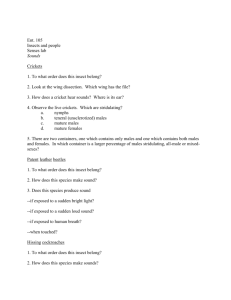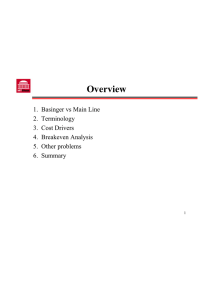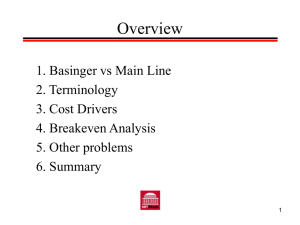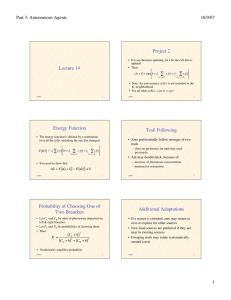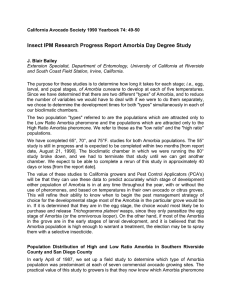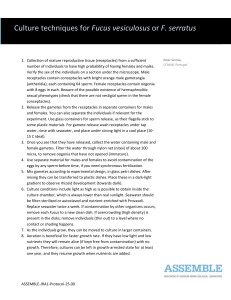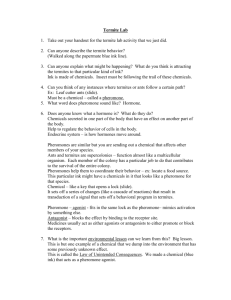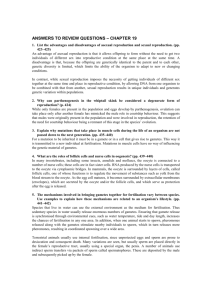Sex and reproduction
advertisement
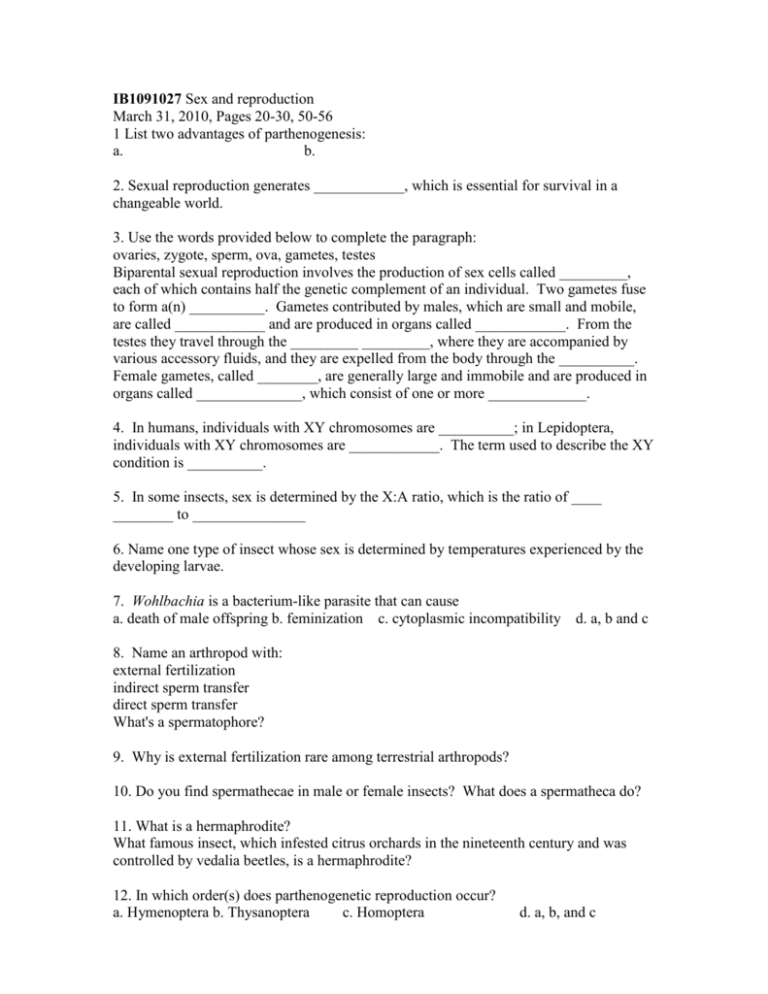
IB1091027 Sex and reproduction March 31, 2010, Pages 20-30, 50-56 1 List two advantages of parthenogenesis: a. b. 2. Sexual reproduction generates ____________, which is essential for survival in a changeable world. 3. Use the words provided below to complete the paragraph: ovaries, zygote, sperm, ova, gametes, testes Biparental sexual reproduction involves the production of sex cells called _________, each of which contains half the genetic complement of an individual. Two gametes fuse to form a(n) __________. Gametes contributed by males, which are small and mobile, are called ____________ and are produced in organs called ____________. From the testes they travel through the _________ _________, where they are accompanied by various accessory fluids, and they are expelled from the body through the __________. Female gametes, called ________, are generally large and immobile and are produced in organs called ______________, which consist of one or more _____________. 4. In humans, individuals with XY chromosomes are __________; in Lepidoptera, individuals with XY chromosomes are ____________. The term used to describe the XY condition is __________. 5. In some insects, sex is determined by the X:A ratio, which is the ratio of ____ ________ to _______________ 6. Name one type of insect whose sex is determined by temperatures experienced by the developing larvae. 7. Wohlbachia is a bacterium-like parasite that can cause a. death of male offspring b. feminization c. cytoplasmic incompatibility d. a, b and c 8. Name an arthropod with: external fertilization indirect sperm transfer direct sperm transfer What's a spermatophore? 9. Why is external fertilization rare among terrestrial arthropods? 10. Do you find spermathecae in male or female insects? What does a spermatheca do? 11. What is a hermaphrodite? What famous insect, which infested citrus orchards in the nineteenth century and was controlled by vedalia beetles, is a hermaphrodite? 12. In which order(s) does parthenogenetic reproduction occur? a. Hymenoptera b. Thysanoptera c. Homoptera d. a, b, and c 13. In which order(s) is haplodiploidy commonly found? a. Hymenoptera b. Thysanoptera c. Hemiptera d. Neuroptera 14. An order with species displaying arrhenotoky is ___________; an order with species displaying thelytoky is _____________. An order with species displaying paedogenesis is ______________. 15. What is a species? 16. List two post-zygotic reproductive isolating mechanisms: a b. 17. According to sexual selection theory, males exhibit _________ and females exhibit _______ _____________. 18. What is sexual dimorphism? Provide an example. 19. Provide examples for these prezygotic reproductive isolating mechanisms: courtship ritual pheromones sound nuptial gift lek 20. What is the lock-and-key hypothesis? 21. Provide an example of a species that engages in traumatic insemination. 22. An intraspecific chemical signal is called a(n) ________________. 23. List two advantages of chemical signalling over other forms of communication: a. b. 24. From what species was bombykol isolated? 25. List three ways insect sex pheromones can be used to control pests. a. b. c. 26. Match the pheromone with its function: aggregation pheromone allows females to evaluate prospective mates aphrodisiac pheromone attracts males to prospective mates sex pheromone alerts conspecifics to the presence of danger alarm pheromone alerts conspecifics to the presence of food trail pheromone attracts males and females to common location 27. Name three insect species portrayed mating by Isabella Rossellini in her “Green Porno” films
